10 Amazing Nature Places to Visit in the Netherlands
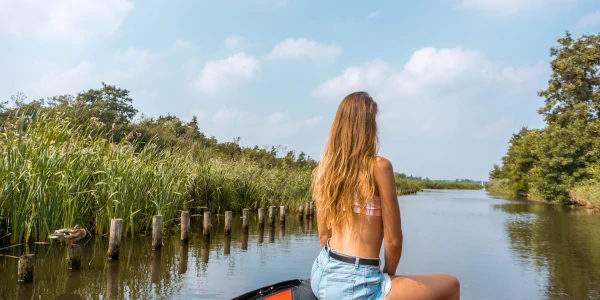
It looks like we’re still quite some time away until we can travel internationally again. Even though we don’t live in a very large country, there are still lots of places in the Netherlands that we haven’t seen yet. We’ve been to many of the larger cities, but we’ve never really explored the nature areas. It’s funny how you can travel the world, but never really visit the places close to you. This blog post is filled with unique nature and national parks to visit in the Netherlands. We would love to support local travel and visit these nature areas in the upcoming months. You can save these places for later if you don’t live in the Netherlands!
Places we’ve yet to visit
National Park The Loonse en Drunense Duinen
The Loonse en Drunense Duinen (Loonse and Drunense Dunes) is a national park in the south of the Netherlands, and the landscape is truly unique. The park is often called “Brabantse Sahara” and that is exactly what it looks like: a desert in the Netherlands. In the park you can find a large area of drifting sand and coniferous forest, but there are also areas with swamps and grasslands. The drifting sand here is “alive” in the sense that the sand area is large enough for the wind to keep moving it around. The area is roughly 40 square kilometers and features plenty of walking and bicycle paths. It’s the perfect destination for a day trip. Mika once did a photoshoot in the park and was completely amazed by the nature. Ever since we started our travel blog, she wanted to return because it’s such a unique park. We can’t wait to visit the Loonse enDrunense Duinen on a beautiful sunny day and pretend we’re in the Sahara!
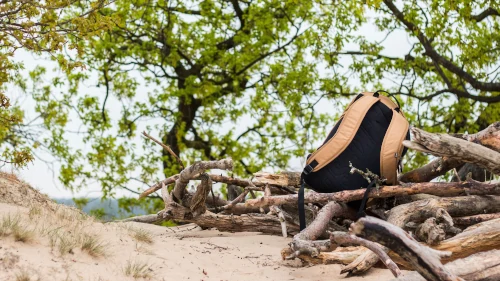
Hoge Veluwe National Park
The Hoge Veluwe National Park (Nationaal Park De Hoge Veluwe) is another national park in the east of the Netherlands. The landscape of the park has been formed during the last Ice Age, which is so interesting. The Hoge Veluwe originally consists of wooded areas, but due to forest logging and grazing, areas with heather and drifting sands were formed. In the park you can find large mammals such as the red deer and the mouflon, but there are also lots of special bird species and insects. The park offers a bicycle sharing system with free bikes for visitors of the park, which is a great idea! The national park is located within the Veluwe, which is a large forest-rich ridge of hills. It takes up around 5% of the Veluwe’s surface. We have been to the Veluwe before, but we’ve never been to this national park. The end of the summer (August-September) is the blooming period of the heather which makes the landscape turn deep purple. The purple landscape looks amazing and we can’t wait to visit the Hoge Veluwe National Park at the end of this summer!
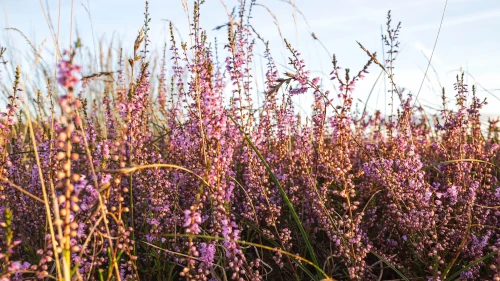
Another national park within the larger area of the Veluwe is Veluwezoom. In the Veluwezoom you can find the Posbank, which is a hilly area with lots of heather. The Posbank view already looks amazing, but with the purple heather it’s absolutely stunning!
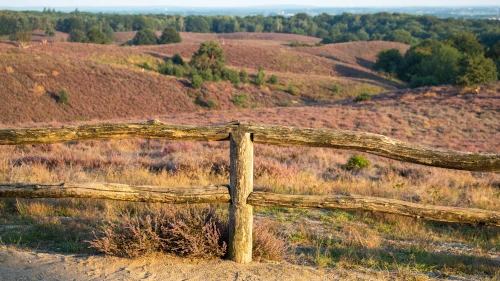
National Park De Groote Peel
With its 15 square kilometers, National Park De Groote Peel is the smallest national park of the Netherlands and is located in the south of the country. You can explore the park by taking one of the three walking routes. It’s a popular place for bird species and is even considered as one of the most bird-rich areas of West-Europe. The landscape of De Groote Peel mostly consists of moor, heather and swamps areas. As we can tell from photos of the park, it’s the perfect place for reflection shots.

National Park Utrechtse Heuvelrug
National Park Utrechtse Heuvelrug (Utrecht Hill Ridge) is located in the center of the Netherlands. The national park is part of the larger Utrecht Hill Ridge, which is the second largest wooded area in the Netherlands (after the Veluwe). The national park covers an area of 100 square kilometers and offers a variety of landscapes, such as forest, heather, sand drifting areas and grasslands. Mammals such as the roe deer, the fox, the badger and the rare European pine marter live in the park. There are lots of walking and cycling routes. The hilly forest area of the Utrecht Hill Ridge is what attracts us the most. We’d love to visit the national park in fall when the leaves on the trees turn orange and red.
Mudflat hiking
Mudflat hiking (or “wadlopen”) is a practice that allows you to walk from the mainland to one of the islands in the Wadden Sea during low tide. Mudflat hiking is practiced in the Netherlands, Germany and Denmark. It is only allowed under the supervision of a licensed guide (or if you have an appropriate license yourself). We’ve never done this before, but it sounds like a thing you have to do at least once in your life!
Lake Wagejot in Texel
Texel is the largest Dutch island in the Wadden Sea and on the east side of the island you can find Lake Wagejot. From april until june, you can find lots of bird species nesting in the lake which is filled with small islands. As we don’t necessarily like bird-spotting, Lake Wagejot isn’t necessarily an interesting place for us to visit. However in July 2017, after a period of heat and drought, the lake turned pink! The drought led to an increased salinity of the water. The Dunaliellas Salina algae that live in the water love salt and created a substance that made the water turn bright pink. Even though periods of drought bring more bad than good, we’re secretly hoping the right circumstances will occur again this year.
Places we’ve already been to
Biesbosch National Park
We live so close to the Biesbosch, and have been there so often, that it didn’t even occur to us that it is a beautiful national park absolutely worth visiting. The Biesbosch is a freshwater tidal wetland and it’s actually one of the last remaining extensive wetlands in Northwestern Europe. The park consists of a large network of rivers and creeks with islands. The area of the Biesbosch is around 90 square kilometers and it consists of three major parts: Sliedrechtse Biesbosch, Hollandse Biesbosch and Brabantse Biesbosch. De Biesbosch is very important for waterfowl, especially migrating geese. You can explore the park by foot, bicycle or boat. Even though we’ve been here many times during the usual family and school trips, we’d love to see the area through “travel blogger eyes”.
Alde Feanen National Park
The Alde Feanen is another national park in the province Friesland which we’ve visited many times without realizing we were actually in a national park. The landscape of the park consists mostly of swamps, lakes, forests and meadows and you can find over 100 bird species and 500 plant species in the park. It’s a lovely park to explore by foot, bicycle or boat. We once spent a beautiful summer day on the water in the Alde Feanen, which was so nice. We’d love to go back to the Alde Feanen this summer.
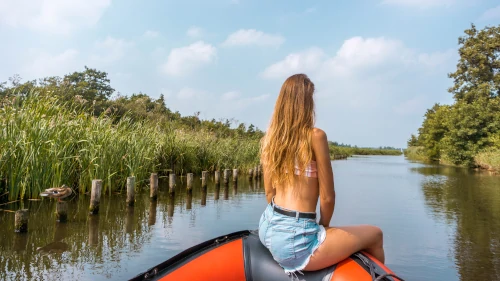

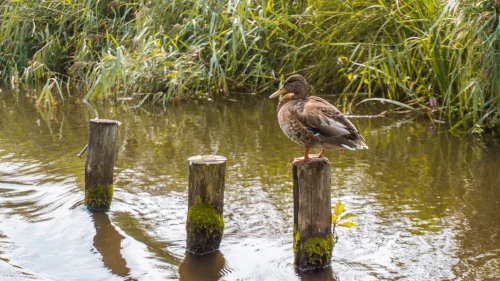
Kinderdijk
Kinderdijk is a typical Dutch sightseeing spot that you can’t miss during your visit to the Netherlands. Kinderdijk is on the UNESCO World Heritage List and features 19 (still-working) windmills surrounded by water and grasslands. The area is absolutely stunning, especially during sunset. Even though we’ve already been here, we felt that Kinderdijk has to be on this list as it’s such a beautiful place. We wouldn’t mind going here again in the upcoming weeks or months. Check our Kinderdijk blog for more information on visiting Kinderdijk.
Visiting Kinderdijk in Holland: Everything you need to know

Tulip Fields
Of course, the tulip fields can’t be missed in this list. Unfortunately, tulip field season is already over but we make sure to visit the fields every year. From mid-April to mid-May, you can find lots of tulip fields in the Netherlands and it’s absolutely a must to see them at least once in your life. Check our tulip fields blogs for all the information you need to visit these fields.
Where to find the best tulip fields in the Netherlands
Visiting the tulip fields in and around Lisse

We hope these nature destinations inspired you to visit the Netherlands. We can’t wait to visit these places in the upcoming weeks and months! Did you add any of these places to your bucket list? Let us know in the comments below!
Be sure to check out:
- our daily life updates on Instagram
- our Stuck at Home vlog series on YouTube
- our TikTok
More The Netherlands
A Unique One-Day Itinerary in Amsterdam
Tulip Fields in the Netherlands - A Photo Guide with Locations
Virtual Tour of the Tulip Fields in the Netherlands

